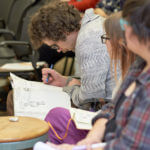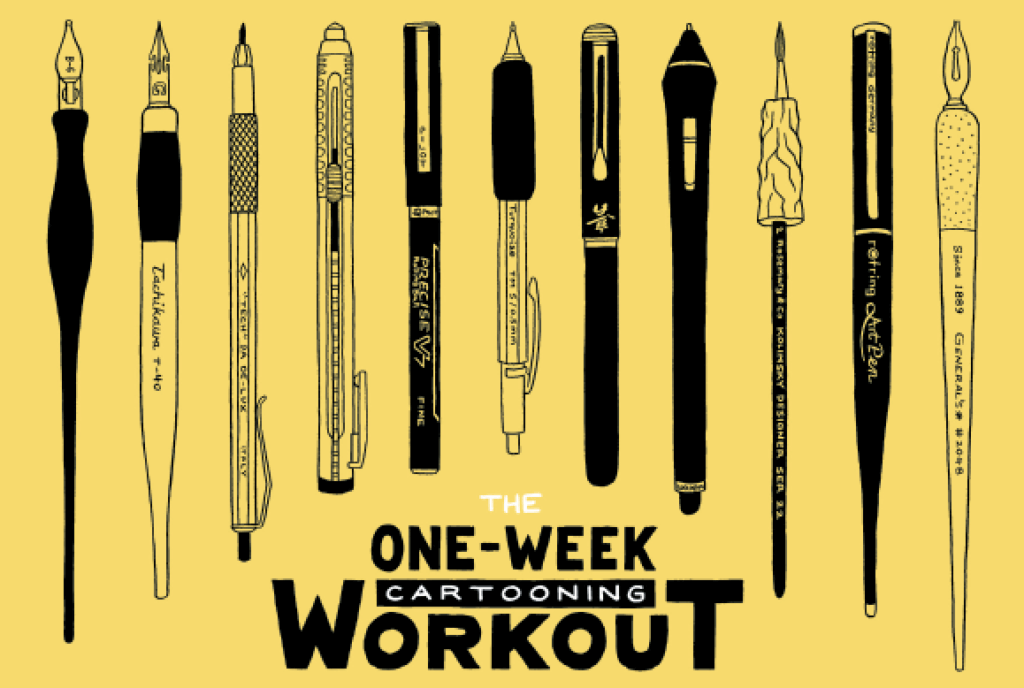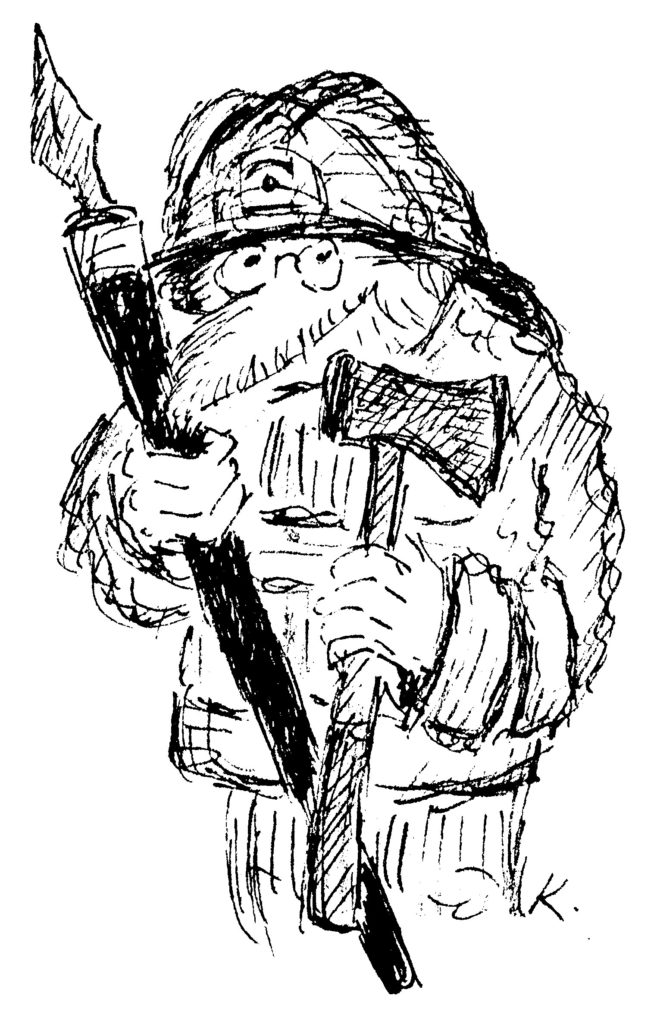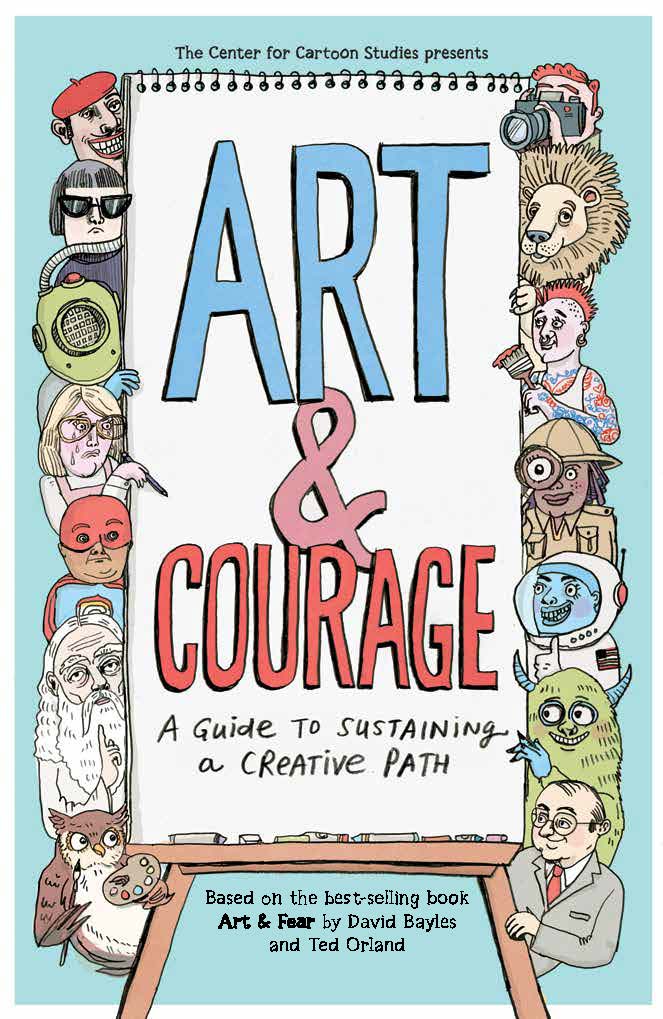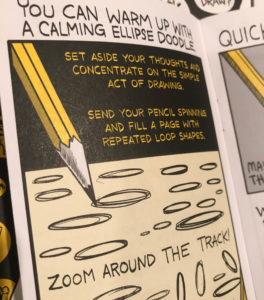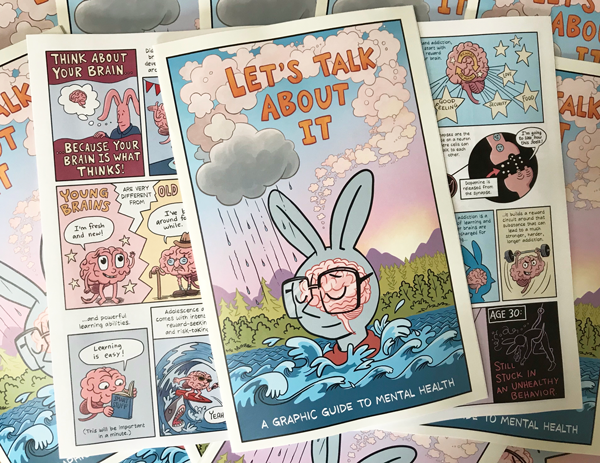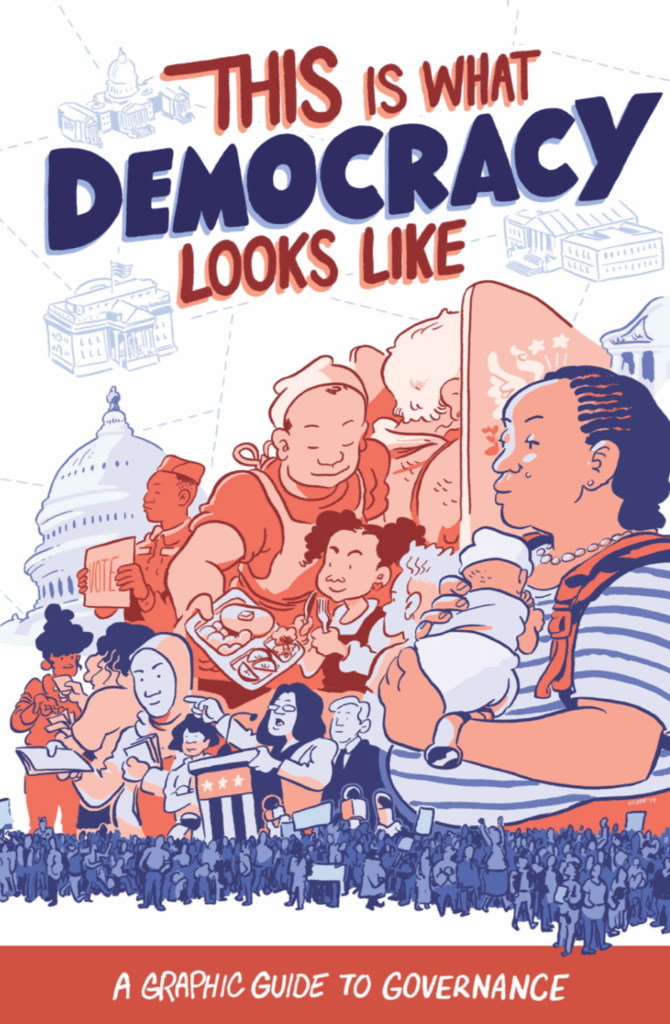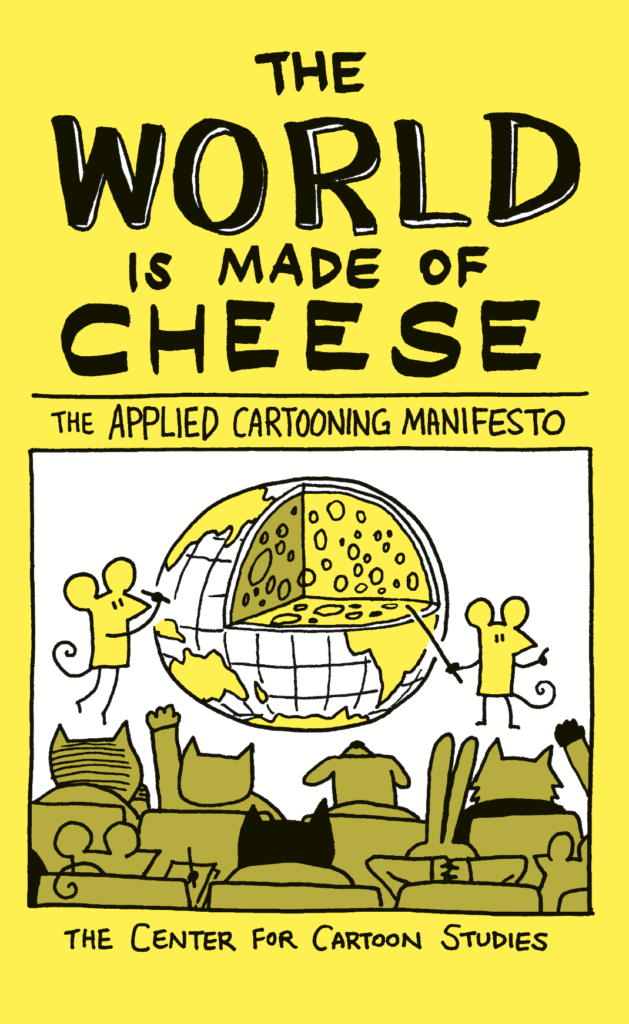May 3, 2017
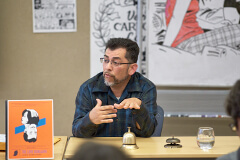
Jaime Hernandez, of Love and Rockets fame, spoke at The Center for Cartoon Studies about comics. How he got into them. How he started making them. What he does now. That is a lot to cover because he has been working on Love and Rockets for 35 years.
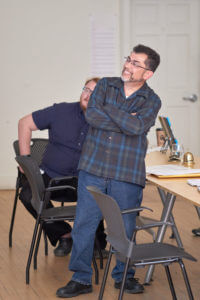
When he was a kid, Jaime’s mom loved comics. She would give him and his brothers money to buy comics; there were comics all over the house. He didn’t realize it was a nerdy thing to like until he went to high school. He and his brothers started making comics because they thought comics were cool.
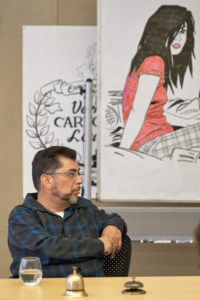
To Jaime, his characters are like real people. In his stories, he knows exactly what the other characters are doing, where they live, where they work. Knowing this makes it easy to weave the other characters in.
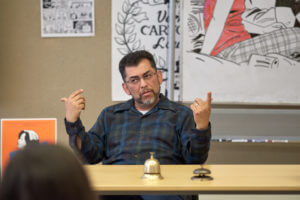
For Jaime, characters fade into the background and no longer lead their own stories when the character is stuck. Jaime knows there is something the character needs to do to develop, but he can’t quite figure out what it is. So he moves to another character until he figures out what that character needs.
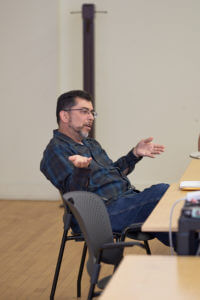
Jaime enjoys talking about his comics with fans at conventions. Sometimes someone tells him about something they liked and connected with in a comic. And sometimes, he had, too, but didn’t think other people would like it. He uses that connection as a guide about what to bring more into the comic. Instead of blindly following the whims of fans or ignoring everything they say, he uses this meeting and resonation to guide the comics.
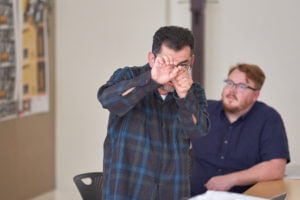
When he first started making comics, Jaime drew with ballpoint pens. But then Gilbert told him real cartoonists used different tools. Not knowing what that meant exactly, Jaime went out and bought a calligraphy kit. He couldn’t draw with anything in it except for the Hunt 22 nib. He especially liked when it wore down so it would give a nice, fat line like a brush. To this day, he letters with a Micron #2, mostly out of habit.
Jaime also treated everyone to the comic he is currently working on: a 4-inch stack of work. He showed his process, which starts by writing a loose script or framework in a notepad. Then he grids out the page. He writes the dialog above the panels, then thumbnails the panel in. As he goes, he decides if a panel is wrong. If so, he physically cuts it out and rearranges the whole page. For him, each book is a very organic, self-contained thing. No page or panel is done until the whole thing is done.
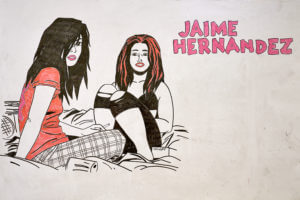
Jaime’s board as drawn by Luke Howard.
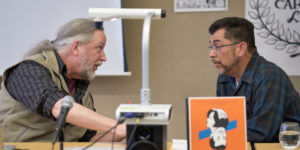
Stephen R. Bissette and Jaime having what is undoubtedly an epic conversation about comics.
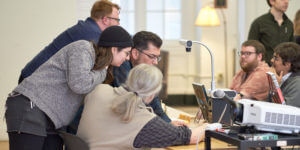
Luke (top-most redhead) is taking bets from Joe Davidson (′16) and Santiago Naranjo (′16) in the front row about whether, between them, Sophie Yanow, Jaime, and Steve will figure out the computer.
- Sandra Bartholomew’s (′17) fancy-as-always notes
- Moss Bastille (′17) has also taken up the note-taking torch.
- Studious as ever, Jacob Bussiere (′17) sits in the front row
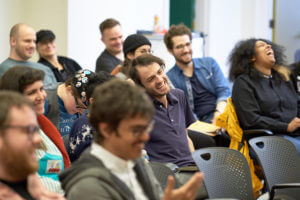
Though it looks like Dan Nott (′18) started the laughter (center), Robyn-Brooke Smith (′17) took it and ran (right).
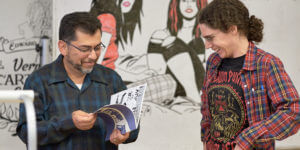
Catherine Garbarino (′17), having recently finished most of her thesis, gets to show Jaime her work.
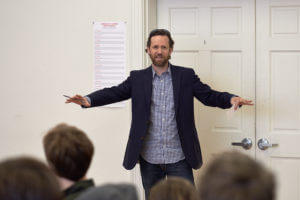
From Dave Lloyd (CCS Operations Administrator): That’s All Folks!
Photos courtesy Abe Olson.
Tags: Cartoon Studies, Fantagraphics, Jaime Hernandez, Love and Rockets, Visiting Artist

